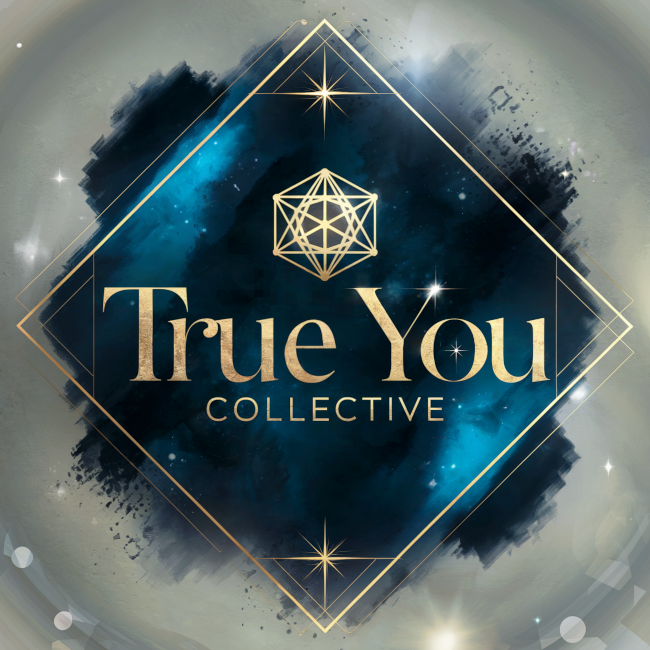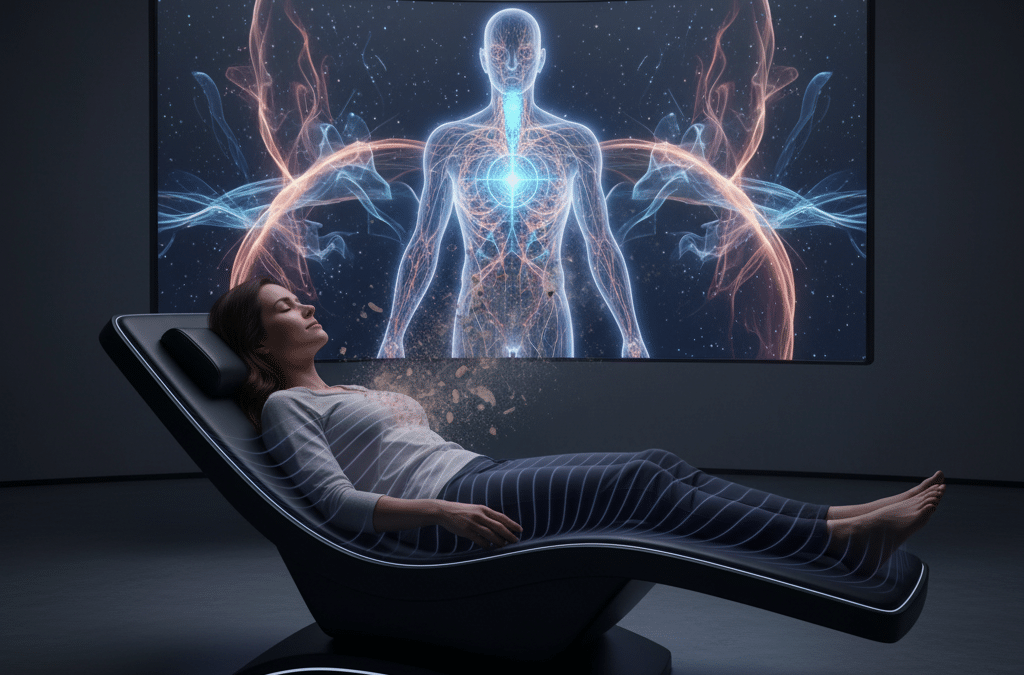Have you ever noticed how pain has a way of holding on? Not just as an ache in your back or tension in your shoulders, but as patterns woven deep into your body — in places you can’t always stretch, massage, or even pinpoint.
That’s because pain isn’t only a physical sensation. It’s a whole-body response involving your nervous system, fascia, and even your emotional history. And while most approaches to pain try to target muscles or joints directly, vibroacoustic therapy works differently: it speaks the body’s own language of frequency and vibration.
🌀 How Pain Creates Hidden Tension Patterns
When you’re in pain, your body does what it’s wired to do — it protects you. Muscles tighten. Fascia (the connective tissue that wraps around everything in the body) becomes rigid. Your nervous system shifts into survival mode.
The tricky part is that these protective patterns can stick around long after the original injury has healed. Research shows that chronic pain often involves changes in the way the nervous system processes signals — your body keeps “remembering” pain even when tissues are repaired【source: PMC reviews on VAT + chronic pain】.
This is why you can stretch, get a massage, or “push through” — and still feel like the pain never fully leaves.
🎶 Vibroacoustic Therapy: Sound You Feel, Not Just Hear
Vibroacoustic therapy (VAT) uses low-frequency sound waves, typically between 30–120 Hz, delivered through a special mat or lounge. Instead of listening with your ears, you feel the vibrations travel through your body.
- These frequencies stimulate mechanoreceptors in your muscles and fascia.
- They encourage relaxation in places that hands can’t always reach.
- They modulate autonomic nervous system activity — shifting you out of fight-or-flight and into parasympathetic calm.
Clinical studies have shown that VAT can reduce pain intensity, lower anxiety, and improve sleep across conditions ranging from fibromyalgia to cancer-related pain【source: PMC systematic reviews on VAT for pain and anxiety】.
💡 In plain words:
“Vibroacoustic therapy dissolves hidden tension patterns from the inside, helping your body finally let go.”
🌀 Grief Lives in the Body Too
Grief isn’t only an emotion. It shows up physically:
- Tightness in the chest
- Heaviness in the limbs
- Sleeplessness and fatigue
- Even immune and inflammatory changes
Research into trauma and somatics shows that the fascia and nervous system store emotional stress as much as physical stress【source: trauma & fascia studies】. That’s why talk therapy, while essential, sometimes can’t touch the “stuck” parts of grief.
The Sound Lounge creates a safe, immersive environment where vibration moves through your body, while technodelic light and soundscapes guide your mind into deep meditative states. Many clients describe it as grief being “lifted” or “moved through” in a way they didn’t know was possible.
💡 In plain words:
“Grief isn’t just in your mind — it lives in your cells, your fascia, your nervous system. The Sound Lounge helps you move it through in a way words alone can’t reach.”
🌀 You Don’t Have to Push Through
How often have you been told to “just relax” or “push through” when you’re in pain or grieving? The trouble is, relaxation isn’t something you can force. The nervous system doesn’t work that way.
The beauty of vibroacoustic therapy is that it does the work for you. The body responds to vibration automatically, releasing muscle tension, lowering stress hormones, and calming brainwave patterns.
Studies show VAT can increase alpha and theta brain activity — the same rhythms seen in meditation【source: EEG + VAT studies】. This helps guide you into states of deep safety and flow, where both physical and emotional healing become possible.
💡 In plain words:
“You don’t have to push through or just relax. The Sound Lounge guides your body and mind back into safety and flow.”
🌀 Moving Stuck Energy, Easing Deep Pain
At its core, vibroacoustic therapy is about movement:
- Moving vibration through tissues to loosen chronic tightness
- Moving the nervous system from stress to calm
- Moving grief and emotions that have been stuck for too long
It’s not magic, and it’s not a cure-all — but research supports its ability to ease pain, reduce anxiety, and improve quality of life in ways that complement both traditional care and talk-based therapies.
💡 In plain words:
“Vibroacoustic therapy uses sound and vibration to move stuck energy and ease deep pain — physical and emotional.”
🌿 The Takeaway
Your body remembers — pain, grief, and tension can leave echoes long after the moment has passed. Vibroacoustic therapy offers a way to release those echoes, using the language your body already understands: frequency.
Whether you’re navigating chronic pain, loss, or simply the weight of daily stress, the Sound Lounge can give your nervous system a chance to finally let go.
💙✨ Your first session is half off. Come see what it feels like to truly release.

